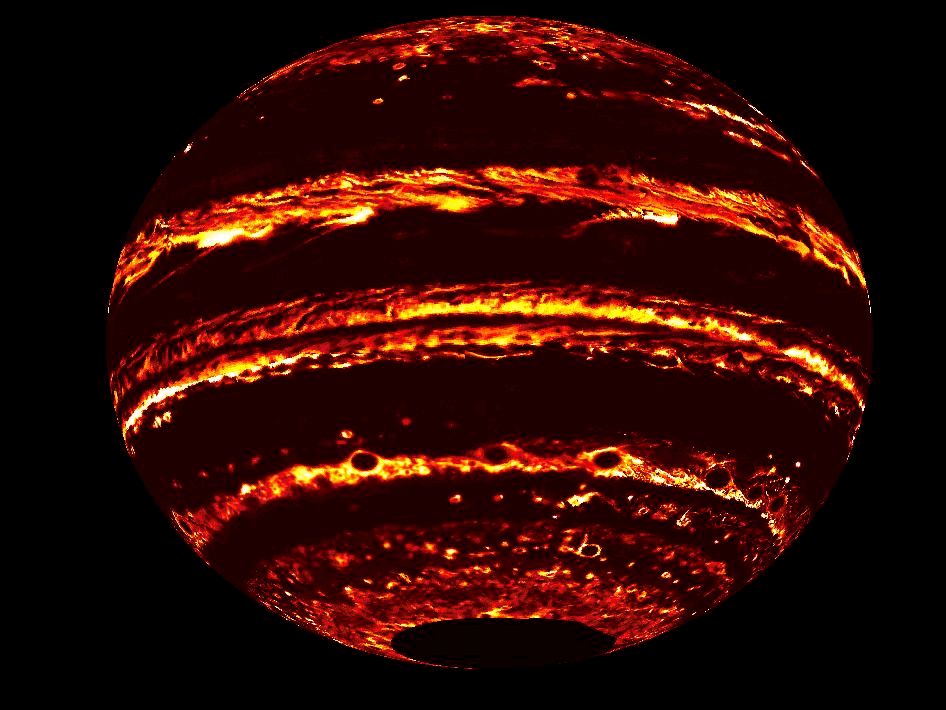New Views of Jupiter Offer Up Marvel and Mystery
From stunning polar images to weird aurorae, the gas giant is even weirder than we thought
/https://tf-cmsv2-smithsonianmag-media.s3.amazonaws.com/filer/3a/7a/3a7a6f4e-1cd5-480f-aebf-514f875284ff/jupiter_pole.jpg)
Think you know Jupiter?
The far-flung planet has been on scientists’ radar for hundreds of years—Galileo Galilei made the first detailed observations of the planet and its satellites all the way back in 1610. But as NASA sifts through the latest data that the Juno spacecraft beamed back to Earth, scientists keep learning more they don't know about the gaseous giant.
Last year, Juno slammed into the planet’s magnetosphere and swung into orbit, capturing some pretty wild sounds and laying open the promise of more info to come. And every 53 days, the craft makes a pole-to-pole transit of the planet, snapping pictures and grabbing data as it goes.
Now, the first scientific data from Juno’s rendezvous with Jupiter are finally being presented to the public—and the results might make you scratch your head.
First thing’s first: Juno got awesome views of both of Jupiter’s poles, and they look nothing alike. In a paper in the journal Science, researchers analyze data that Juno snagged of the area beneath the planet’s cloudy surface. It did so using microwave sounding, which is also used by weather satellites to tell what’s happening on the ground during storms. The technique let scientists map out what’s happening inside the planet’s intense polar storms, which Juno’s cameras also captured in all of their swirly, mesmerizing glory.
Despite expectations that those storms would contain a mixture of gases across the whole planet, they didn’t. A huge, ammonia-rich plume seems to be billowing up from somewhere inside Jupiter. Researchers think it bears a resemblance to Hadley cells, which fuel the trade winds back on Earth.

There was another surprise on Jupiter: A magnetic field that’s even stronger than researchers expected. In another paper in Science, they describe a lumpy magnetic field that seems to come from an even larger inner core than thought. In a paper devoted entirely to the core in the journal Geophysical Research Letters, researchers hypothesize that it’s a whopping 7 to 25 times the mass of Earth’s core and could take up more of the planet than expected.
“Intense” aurorae were also observed on the planet, but they don’t seem to work like Earth’s. On our planet, the sun shoots particles toward the planet. They strike Earth’s magnetosphere and travel toward the polar regions. Some of these particles are diverted in and slam into atmospheric gasses, generating light.
Not so on Jupiter—they seem to be traveling outward from the planet instead of downward. That suggests a truly weird magnetic field. As The New York Times’ Kenneth Chang explains, that could be accounted for by the makeup of Jupiter’s core—liquid hydrogen instead of molten iron.
Jupiter scientists have more information to share—a lot more. Forty-three additional papers are available at Geophysical Research Letters, and more data is coming in all the time. And with an upcoming flyby of Jupiter’s iconic Great Red Spot, you can rest assured that there will soon be even more to learn.
“Every 53 days, we go screaming by Jupiter, get doused by a fire hose of Jovian science,” admitted Scott Bolton, the mission’s principal investigator, in a press release, “and there is always something new.”
/https://tf-cmsv2-smithsonianmag-media.s3.amazonaws.com/accounts/headshot/erin.png)
/https://tf-cmsv2-smithsonianmag-media.s3.amazonaws.com/accounts/headshot/erin.png)